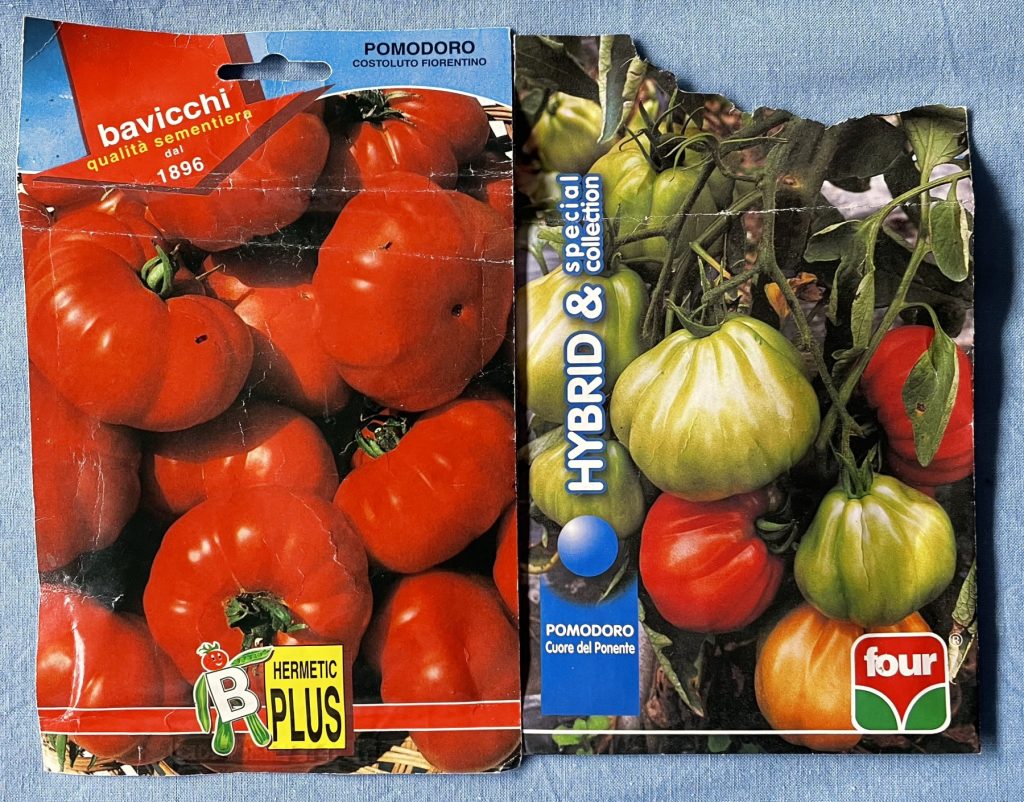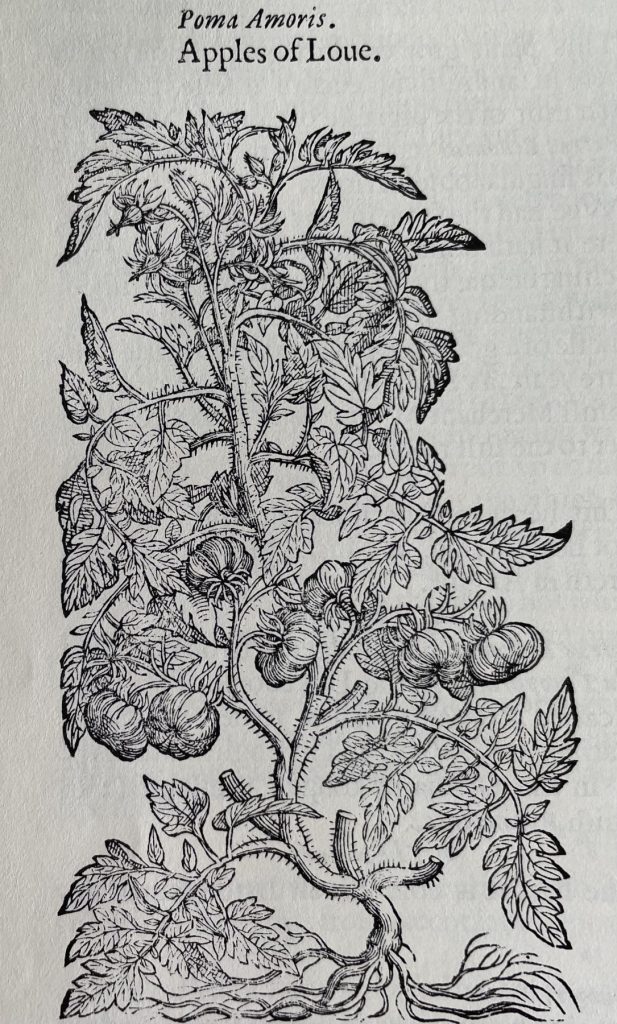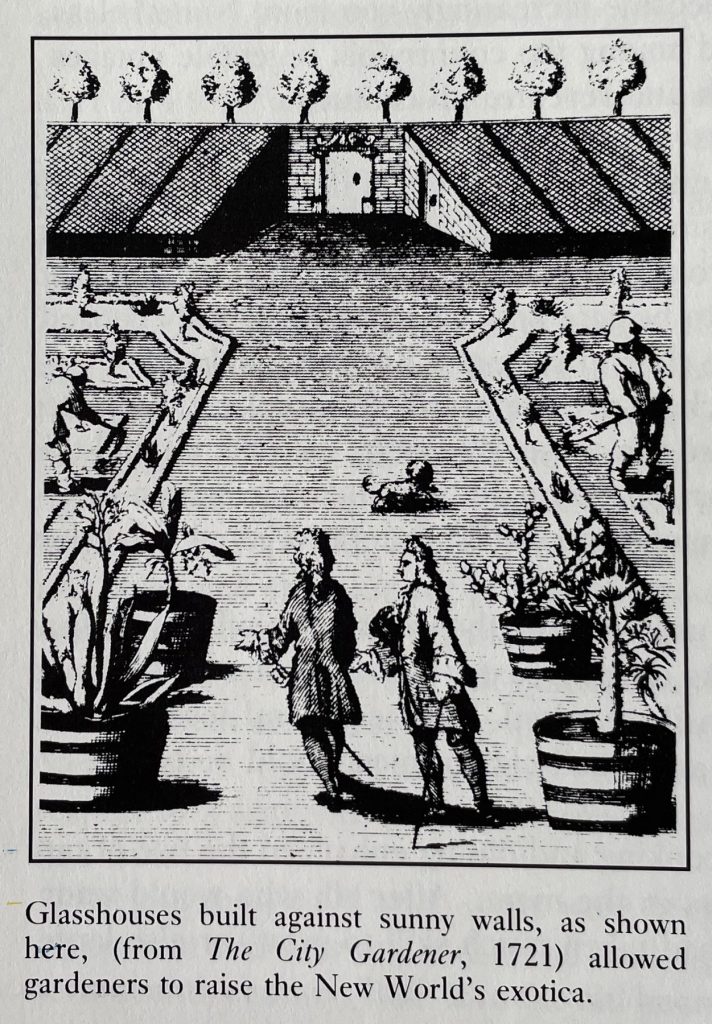To paraphrase the 18th-century essayist, Alexander Pope, “hope springs eternal in the gardener’s breast.” Certainly true of this one and others like me across the Front Range, as we keep a watchful eye on the weather, and a hopeful one on our tomato seedlings.
Is there anything more redolent of hopeful visions of summer bounty than a seed tray bursting with new life; two small leaves topping a thread of a stem, sheltering under glass, encouraged to expand by the warming rays of the spring sun? Forget sugar plums, my dreams are of big ol’ ‘maters topping out at nearly one pound each and a handful of red sugar cubes to enjoy like candy.

For years now, I have grown two varieties that I acquired on trips to Italy – some folks bring home Michelangelo’s “David” dangling from a key chain, I bring home packets of seed. Go figure. ‘Cuore del Ponente’ is the heavyweight and staking is a challenge as it’s indeterminate and productive on all its branches. Good for sauce and eating. ‘Costoluto Fiorentino’ is more gentile, as you might expect being Florentine if by name only. Very like a beefsteak, it’s best for sandwiches, lots of them. Seed sown under glass in early April makes plants that are garden-ready by mid-May. And away they go, making plenty of ripe fruit in our short growing season, given plenty of water and feeding early on, but tapering off as fruit sets and bulks out. The sugar cubes are ‘Sweet 100’ that come as plants from a local nursery— ‘Sweet 1000’ would be a better moniker. These I freeze whole, fresh-picked from the branch, and store like sacksful of marbles, grab by the handful to make the sweetest instant sauce when cooked down with olive oil and garlic, salt & pepper.

Gerard’s Grete Herball of 1633 advises English gardeners to sow seed for Love Apples (as tomatoes were then called, being a relatively recent introduction from the New World) in early April, “in a bed of hot horse dung”. A later refinement was to grow them in hot houses built against a south-facing wall; as technology evolved, the walls would be heated to make possible the growing of a wider range of exotic fruit. But I find that any sun-baked venue works, but since nights can be quite cold in Rockies, the young plants are sheltered within water-filled cloches, either purchased or home-made (a good way to up-cycle plastic soda bottles).

As I write, Earth Day is just a few days away, and may already be passed by the time you read this, I came on an article by Audrey Schulman that resonated as we confront climate change.
“A few millennia from now, archeologists digging in the ground will come to a different layer. Less pollen, fewer tree trunks, a vast reduction in the bones of wild animals. A layer of ripped aluminum foil and plastic bits and chicken bones and radiation from nuclear tests. Even sedimentary layers of the oceans floor will show changes, the circulatory system shifted, the current that distributes salt and temperature globally. We humans are writing our autobiography in the planet’s dirt. When looked at through the lens of geologic time, our speed isn’t that different from a meteor strike.”
I’m encouraged to learn that there are many small but impactful conservation projects underway around the globe, led by indigenous peoples drawing from their bank of inherited knowledge about how their particular environment works, after all, they have been living with it for millennia. And as the old proverb reminds us, “it is human nature always to find fresh cause for optimism”.
Indeed.
© Text and photos Ethne Clarke, 2022.
Why this Era of Global Change Demands New Language. Audrey Schulman on the Limits of Scientific Terminology, Literary Hub via Europa Editions: https://bit.ly/3OswyjO
The Art of the Kitchen Garden, Ethne Clarke. Alfred A. Knopf, Inc. 1987: https://www.goodreads.com/book/show/4173776-kitchen-garden-art-of
‘Cuore del Ponente’ is available from Territorial Seed, but named as ‘Cuore del Bue’: https://territorialseed.com/products/tomato-cuore-di-bue?variant=12905846341731
‘Costoluto Fiorentino’ is also from them: https://territorialseed.com/pages/search-results-page?q=costoluto+fiorentino


